Things should be heaving in the massive warehouse serving as a transit station for the bulk of the parcels that will make their ways to Irish homes this Christmas, but when Pricewatch walks through the door, it’s as silent as night – and all is calm.
“Everyone’s on their coffee break,” says Maurice Ebbs, the man in charge of the parcels, as he looks just the faintest bit embarrassed by the serenity around him.
He also knows it won’t last though.
He points to a mountain of cardboard-clad packages belonging to one well-known international retailer and says that “on a normal day we’d get 400 parcels off them – but on Black Friday we had 11,000.”
‘Lots of guests got tattooed’: Jack Reynor and best man Sam Keeley on his wedding, making speeches and remaining friends
The best Christmas playlist, according to the pros
Bressie’s Christmas: ‘Once someone suggested having duck. It was never mentioned again’
From Anne Enright to Dr Seuss: eight of the best books to read at Christmas
Black Friday was when the Christmas rush at An Post’s Dublin Mail Centre campus – two massive warehouses near Ballymount, west Dublin – started in earnest, he continues.
“It gets busier in October, and then Black Friday kicks off and it is busy until December 12th – and then it kicks off again in January with the sales,” Ebbs explains. He sound tired just saying it.
All the parcels that are delivered by An Post are handled either here or in three much smaller hubs strategically located around the State. Then they are sent to 110 delivery service units (DSUs) and then to local post offices before being delivered to homes across the country.
“We start at 8am and we finish at 4am, but we basically run 24/7 and can do around 10,000 parcels to 110 DSUs around the country every hour,” Ebbs says.
Once the parcel is assigned a code, the customer and the retailer are sent a tracking number with 97 per cent getting to their destination the next day. When you see this in full flight, it is amazing
— Maurice Ebbs, An Post
It’s far from all this he was reared. He joined An Post in the mid-1980s as a 16-year-old and was initially tasked with delivering telegrams on the back of a motorbike. The last telegram in Ireland was sent a decade ago, by which time Ebbs had long since found his working day occupied by different tasks.
As he talks, the staff charged with the safekeeping of so many of Ireland’s presents file back on to the warehouse floor. Then, the stream of hideously complex looking carousels carrying the presents from massive global companies and tiny artisan ones based in the remotest parts of the island roars back into life.
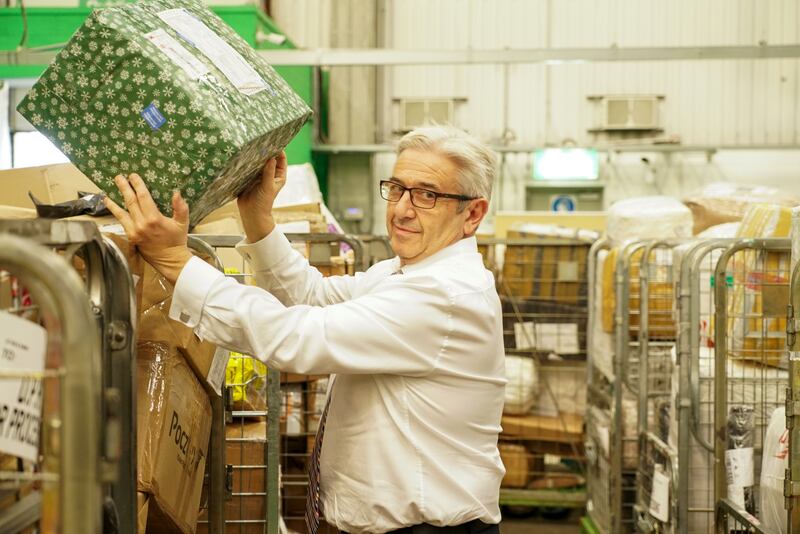
The spaghetti junction system weighs and scans all the parcels. It sends the lighter ones down chutes and into green skips carrying the names of destinations across the State, while the heavier and more fragile parcels – anything over 2kg – are directed down chrome slides before being lifted by hand into a different set of skips.
All the skips are wheeled to loading bays and onto trucks which come and go every few minutes before making their way across Ireland where they will – hopefully – make someone’s day when they arrive.
“Once the parcel is assigned a code, the customer and the retailer are sent a tracking number with 97 per cent getting to their destination the next day,” Ebbs says. “When you see this in full flight, it is amazing.”
He’s not wrong.
This week will be one of the busiest weeks An Post’s hub has ever seen, as in excess of 2 million parcels will come and go.
Garrett Bridgeman is An Post’s director of mails and parcels and the man charged with making sure the entire delivery system stays on the rails.
Like Ebbs, his connection with An Post runs deep, having joined the company more than a quarter of a century ago after following in his father’s footsteps.
The business his father joined more than 65 years ago could scarcely have been more different from the one his son oversees today.
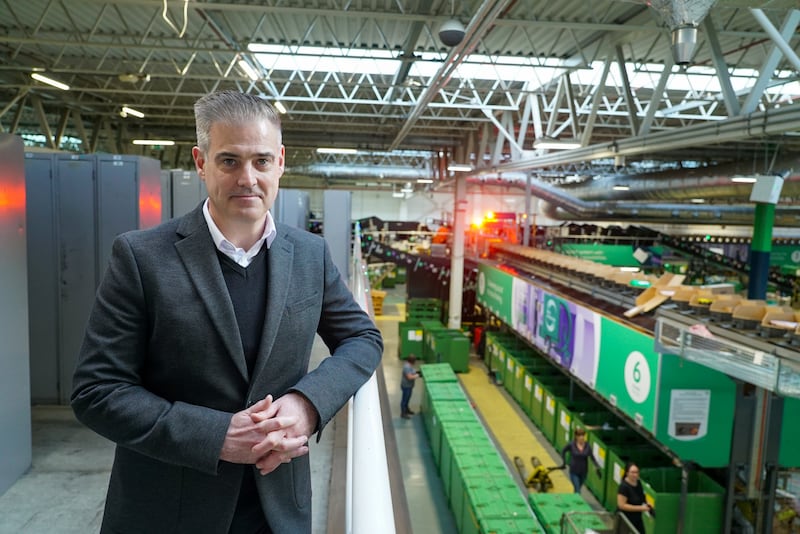
The younger Bridgeman is in the mail centre building across a yard from where Ebbs is working on the parcels, and he reflects on how much change he has seen – even in the last five years.
“In 2019 people were buying predominantly UK brands, but we were a long way behind our friends across the Irish Sea when it came to online shopping,” he says.
“And then all of a sudden, something which I hate talking about happened,” Bridgeman continues. “Covid arrived.”
[ An Post parcel volumes to hit weekly record of 3.3mOpens in new window ]
The almost-overnight nationwide lockdown saw online shopping explode with retailers all over the country – big and small – given little choice but to embrace online trading.
Serendipitously, just before Covid hit, An Post had spent €50 million on revamping and enlarging its delivery hub, so was ready for the onslaught.
“Parcel volumes doubled overnight,” Bridgeman says. “We went from 300,000 a week to about 600,000 a week. Thankfully, we had the infrastructure here. So what we did between 2020 and today is we started taking our post men and women off bicycles and putting them into vans, because obviously parcels take up a lot more space than letters and we want our post men and women driving vans and where possible electric vans. That’s the big focus.”
He salutes Irish retailers, who “really upped their game, and their online offerings” during and then after the pandemic.
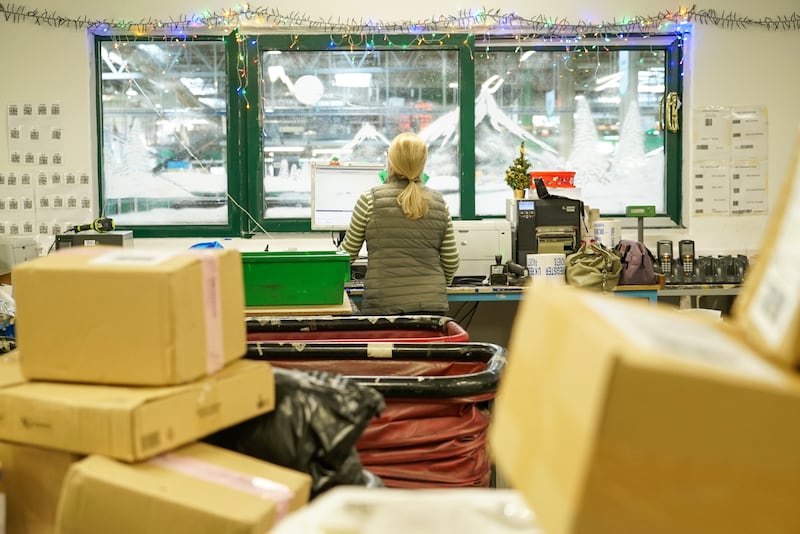
“In 2019, 70 to 80 per cent of online purchases in Ireland were from the UK [and] today over 50 per cent are made from Irish retailers,” he says.
Necessity was a key driver in the situation, but also the barriers to entry were lowered thanks to technology that has made it easier for small players to do their business online.
He says the hub he is sitting in will handle about 1 million parcels a week in a normal week, but of course, these are not normal weeks. “Last week [late November at time of speaking] was our busiest week of the year. We did 1.61 million parcels, and [in early December] we’ll hit 2 million.” He says this week is likely to be the busiest week ever at the hub, with more than 2 million parcels managed and a similar number of letters delivered.
Each week the campus handles about 970,000 letters, with many coming from utilities and businesses. This week the number will more than double, as in excess of 1 million Christmas cards are sent and received.
Julie Gill works in An Post’s marketing department and she joins the conversation at the mention of Christmas cards.
“I think people do love to see the cards coming,” she says, pointing out that handwritten notes are pretty rare these days. “It is a little something special [and] we’re probably one of the last remaining markets where we there is such a big sending culture.”
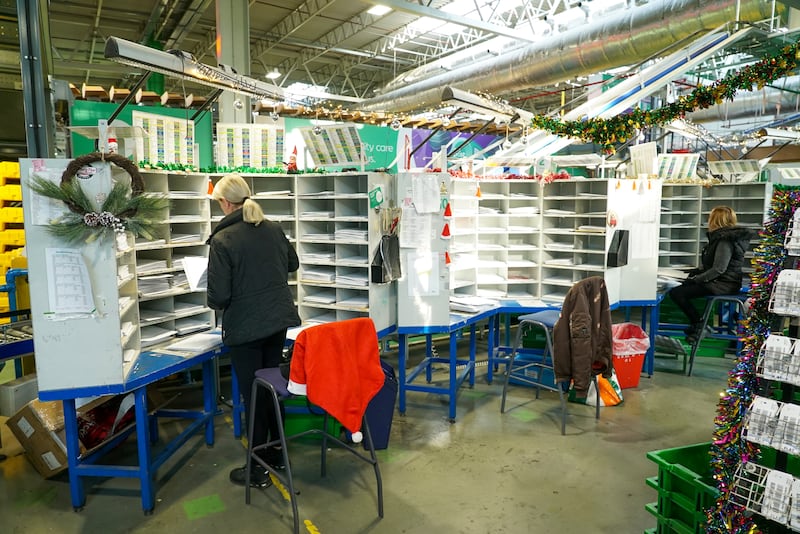
Given where we are speaking it would be almost rude not to mention Brexit, seeing as it has had such a massive impact on An Post’s operations.
Bridgeman says that while An Post and many of the larger retailers in the UK had done their homework and were ready when Britain officially became what is known in EU circles as a “third country” – meaning reams of paperwork for those trying to send products from there to here – the British government and the Royal Mail were slower to complete the jigsaw.
[ Man found in truck at An Post centre had hidden in the vehicle on the ContinentOpens in new window ]
“We built all the systems and the Royal Mail were due to put systems in place for the smaller retailers,” but, he says, that did not happen in as timely a fashion as it might have.
“We used to do 100,000 customs declarations a year,” he says. That has climbed to closer to 14 million now.
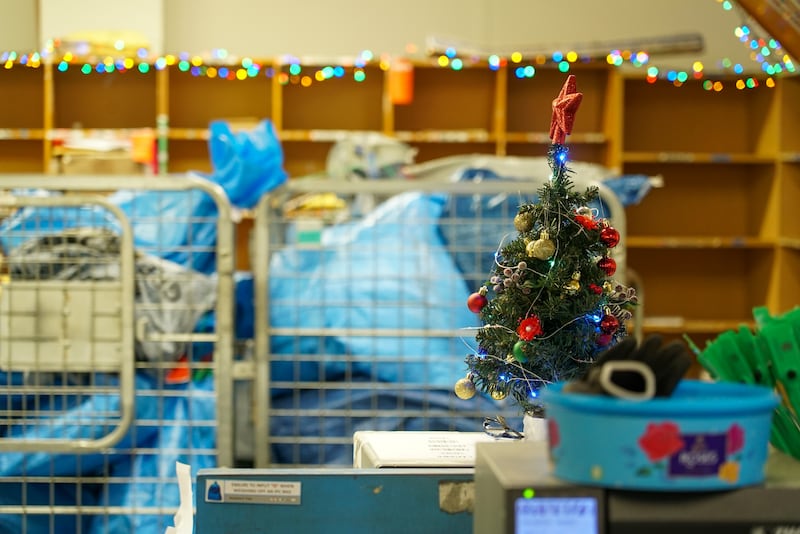
“Years ago there was spot checking, but now every item needs to be electronically checked. We have collected €200 million in Customs and Excise,” he continues.
He says that while Customs complexities can make deliveries difficult, it’s in An Post’s DNA to “get it to the customer. That’s it – [but] we need to follow these regulations or be in breach of European law.”
Like every post organisation throughout the world, we’re all moving from this old world of letters to a new world of parcels
— Garrett Bridgeman, An Post
Deliveries rely largely on the electronic information provided by the sender, but there are certain red flags that will see Revenue take a keener interest in particular packages. When this happens, these items are extracted by the system and handed over to the Customs unit, which has a large, dedicated presence at the hub.
Its job is to check packages, assess invoices and approve them, and at times attach higher charges, or sometimes send packages back from whence they came.
An Post has developed bespoke AI-assisted technology that uses all manner of complex algorithms to work out whether and when a person is likely to pay charges attached to a parcel, and lines them up for delivery and processing on that basis.
[ Christmas sorted: How An Post is coping with record demandOpens in new window ]
At a most basic level, the system will deduce that a person waiting for a hairband that has come all the way from China with a value of 50 cent, which has attracted Customs charges of €5 might, not race to pay the charge – unlike someone waiting for a much higher-priced product.
Bridgeman says about 1 per cent of deliveries encounters big obstacles when they arrive at the hub and stresses that while 1 per cent is a small number it is still too high. He expresses frustration that more is not done by overseas senders to ensure there are no obstacles.
As to the future, Bridgeman knows there will be challenges. “Like every post organisation throughout the world, we’re all moving from this old world of letters to a new world of parcels.”
He points to the competition from other delivery companies and, to a lesser extent, Amazon, which does a significant amount of business with An Post, making it as much a partner as a rival.
He says the rivals are “helping us make a better transition into this world, and it is a really exciting place to work”.












